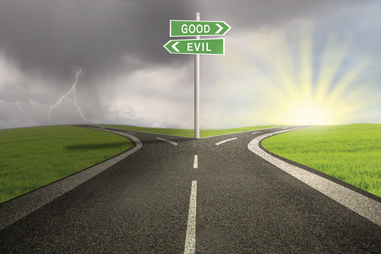The concepts of good and evil, as they apply to humans, have a broad range of definitions and there is no one single way to define either one. Yet these concepts are ones that humans struggle with each and every day. As the Zygon: Journal of Religion and Science discussed, “Human beings have always had to wrestle with evil. It so often tears asunder our hearts and minds as we struggle to comprehend how and why one human being can destroy another. Evil rips apart our hope of finding, or making meaning in life.” 1
|
There is also a broad range of ways to understand the cause, or source, of human good and evil. Many look to science to understand the possible causes of why a person might do good or evil and cite the biological workings of the human brain as being responsible for these actions. Many also look to theology for ways to understand human actions of evil and good and cite religious reasons for their source.
But one doesn’t have to look too far to see that both good and evil are present in the human species. This observation of humanity is portrayed in the story of Dr. Jekyll and Mr. Hyde written by Robert Louis Stevenson in 1886. Click on the links to read a summary that tells highlights from the story. |
|
So how can we understand both the scientific and theological claims for either the biological or theological source of good and evil in humans? Click on the next tab “THE TWO SIDES,” or the button below, to learn more about these claims.
|
Below are two options for using the LEADER GUIDE; the first option contains information for this page only and the second option contains the entire LEADER GUIDE.
|
1 Karl E. Peters and Barbara Whittaker-Johns, “Scientific and Religious Perspectives on Human Behavior: An Introduction,” in Zygon: Journal of Religion and Science 47, no. 4 (December 2012): 799.
